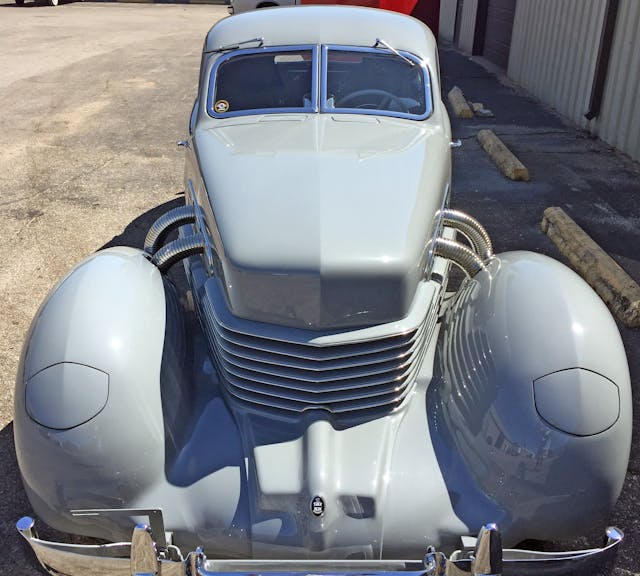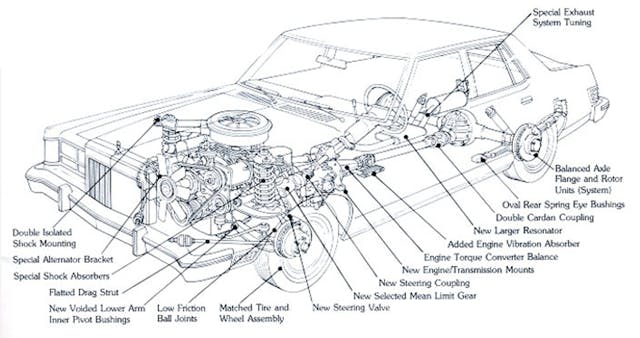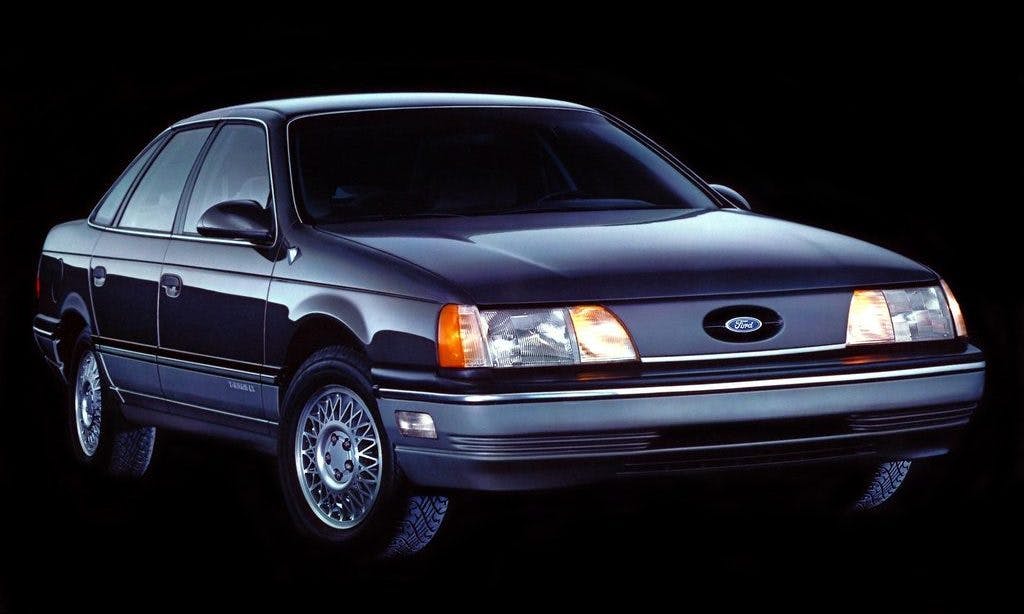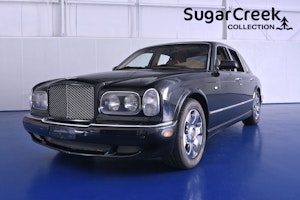Media | Articles
Piston Slap: Urban Sprawl And the Living Room on Wheels?
Jay writes:
I’d love to hear Sajeev’s thoughts on the changes passenger vehicles have undergone pre-1967 to today.
Of course, these changes include complexity, i.e. safety/emissions/reliability etc., but also the nature of passenger transport. Vehicles are no longer point-to-point transportation, but a living room on wheels.

Sajeev answers:
Jay, your point about cars being “living rooms on wheels” resonates with me. There’s a parallel between where we live and the inherent designs of our vehicles, and I bet it’s one that many folks can appreciate. Put another way, while it’s true that vehicles have permanently altered the landscape of the cities we live in, cities have also forced changes to what automobiles get made and which never see the light of day.
So this won’t be a Piston Slap article about the car itself, because we can’t possibly live in a vacuum this time ’round.
One of the biggest reasons why cars don’t live in a vacuum is urban sprawl. Sprawl has made life better for many, but no far-reaching plan is without consequence as the decades march on. Sprawl incentivizes travel, and luckily, cars improved over time. Cars have filled in the gap between one’s place of residence and place of business.
And cars have become roomier, faster (higher compression engines, overdrive gearing on the highway), have better NVH controls (padded materials, asphalt/butyl insulation, etc.), and justified their existence via reducing smog when urban density and increased populations became a concern. That extra speed from punchy 1950s small-block engines also brought about increased safety since 1967 (collapsible steering columns, airbags, ABS brakes, etc.) making for safe and comfortable personal transportation. All good stuff.



With my rant about Malaise Era engineering in mind, remember that vehicles are always exposed to the latest technology of their time. Cars from the 1930s were influenced by Streamline Moderne products that cleaned up their airflow at speed, space travel and small block V-8s were common themes for the 1950s, and computer science (ironically) underpinned neoclassic style in that 1970s Malaise Era.


The advancement of the automobile was once a progressive dream come true, but these days it feels more run-of-the-mill. Platform sharing means SUVs are actually sedans, and your engine can get replacement parts anywhere from the UK to Southeast Asia. No matter the country of origin, everyone adapted by making bigger, quieter and faster vehicles, at any price range.
Perhaps that is expected at such ridiculous asking prices in today’s market. Not designing a car that can effortlessly cruise at 85 mph with a plethora of airbags, handling nannies, active cruise control, a great stereo and a quiet interior for five occupants, means your business will be run out of business. (Unless you’re in China, but that’s a whole ‘nother ballgame.)
But cars do not operate in a vacuum; rather they are a byproduct of the available technology, financial constraints, consumer feedback, and city/state/federal government input. Where we live tends to dictate our automobile purchases, so I apologize in advance for projecting these wide-ranging impacts into a single city—one that might not represent your specific location.
Yes, I am talking about the urban hellscape that is my hometown of Houston, Texas. I remember when there was a national 55 mph speed limit, and it didn’t seem like a big deal in the city. Congestion wasn’t terribly bad most of the day, nobody knew the term “road rage,” and we were all taken aback when they were building a second loop around the city. Perhaps I was naïve in my youth, as I thought urban sprawl would end at this second loop.

Now we have three loops, some of the worst congestion in the nation, 80+ mph speeds on the freeways that are a daily occurrence, and the roads are getting kinda dangerous for pedestrians and motorists alike. I’m not suggesting that correlation equals causation, but one likely reason Houston motorists behave this way is because we’re stuck in our vehicles for a disturbingly long time. We are the embodiment of the city with living rooms on wheels.
Houston is likely an edge case, too extreme for other parts of the country. But odds are you have seen how urban sprawl changes your landscape, either as it encroaches on your property or how your tax dollars are spent maintaining/expanding all these roads you never use.

While technology, economies of scale, and innovative design continue to advance the automobile as Jay suggested, I can’t help but think these are both needed and encouraged by the way we, as a society, live. And as our commutes get longer thanks to urban sprawl, we absolutely need the aforementioned living room on wheels.
But my thoughts are never the end of the story. What say you in the comments section, Hagerty community?
Have a question you’d like answered on Piston Slap? Send your queries to pistonslap@hagerty.com—give us as much detail as possible so we can help! Keep in mind this is a weekly column, so if you need an expedited answer, please tell me in your email.
***
Check out the Hagerty Media homepage so you don’t miss a single story, or better yet, bookmark it. To get our best stories delivered right to your inbox, subscribe to our newsletters.
Marketplace
Buy and sell classics with confidence




















When Jay wrote, “Vehicles are no longer point-to-point transportation, but a living room on wheels”, I shed a little tear. Many authors and commenters on this site write things like, “it’s a car, it’s meant to be driven, just take it out and drive it!” Which I deeply believe in. And then I read things like Sajeev’s response (and yes, admittedly his city is likely to the extreme, but so are a lot of others coast-to-coast and even worldwide) which almost sound like cars have morphed into more like prison cells with ball-and-chain anklets than enjoyable transportation devices. It’s depressing, really.
Regarding the Houston freeway picture above (credited to Smiley N. Pool/Houston Chronicle/Getty Images), I have only this to say: Guter Gott im Himmel!
Thanks for this input. To your point, cars are indeed a ball and chain for my regular activities in the city.
When you only have one choice for transportation, you really have no choice.
And it’s not a terribly a fun choice, no matter how much I love/enjoy my vehicles. Sometimes I get lucky and congestion is minimal, and the joy of driving occasionally breaks through the clouds. I am just glad I work from home, can run errands at off-peak times, etc. otherwise driving would be far more stressful.
50-60 years ago cars (even nice cars) weren’t really that nice. The life expectancy was shorter, they rusted out faster and the fit and finish followed suit. It’s funny when a Mustang of Camaro gets a “concours level” restoration it ends up being much nicer than it was when new… no more orange peel lacquer etc.
Agreed. There was never a ’68 – ’69 GTO with hidden headlights that all the parts lined up from the factory. I see them at shows and they try and try to get things to line up. I’ve had three GTOs and not a one had the hood and fenders have the same exact arch that they all lined up perfectly. Taking the cars apart, I learned it was an impossibility!
There was no “far reaching plan” to urban sprawl , there was really never any plan at all. People moved out of the cities to, what they thought, would be some idealized location. Fresh air and sunshine, howdy neighbor. With so many wanting a piece of that dream it’s no wonder that the tidal wave washed away the garden. Insta-grow. Just throw down the seeds and ‘poof’ 200 townhouses. Just keep moving out farther out, damn the torpedos and full steam ahead. There are those now who want the opposite, move back in to the city. Not spend the better half the day a prisoner in their car. Having things only a walk away has very definite advantages and a lifestyle worthy of at least trying. Though certainly not for everyone. Of course there will be those who claim all our cities have become unfit to live in. See them only through a narrow scope of a lens and a narrative that depicts them as post apocalyptic battlegrounds. You can easily find that claim has been made for decade after decade. I’m always reminded of what Fran Lebowitz commented when confronted that ‘ why you can’t ‘ argument about living in New York. She simply said ” Well you know…nine million people do.”
Sajeev – your comment about maintaining roads that you never use has a solution. It’s called toll roads, and you need look no further than Dallas for an example. I don’t know how fair the Dallas system is, but here, the Garden State Parkway tolls pay for its maintenance.
That’s definitely part of the equation. I must admit my ignorance as to how much of a part that can be. My issue is the number/size/maintenance needs of surface streets, ones that would be logistically difficult (and politically impossible?) to turn into toll roads. There are so many surface streets and they all need $$$ to remain usable.
Most of today’s cars do not feel like a “living room on wheels”. The land yachts of the 50’s-70’s with their sofa like seats front/rear fit the bill better.
George P – Yea the The Turnpike and The Garden State are really good, a whole lot better than they used to be for sure. But many of the side roads are still for s**t. Jersey usually ranks around 45th or lower when it comes to asphalt quality. But if you look at the crazy spiderweb of roads that come in and out of the state, the pure volume, plus the hot/cold and other conditions, it’s understandable.- ‘Roadwork will start on Rt. 46 this Monday between ‘… Yikes!….How many thousands of vehicles per hour?
Of course you want all the comfort of a living room on wheels. If you have a 20+ minute commute to work for around 250 days per year, you are spending an entire week 24/7 in your driver’s seat! Every year!